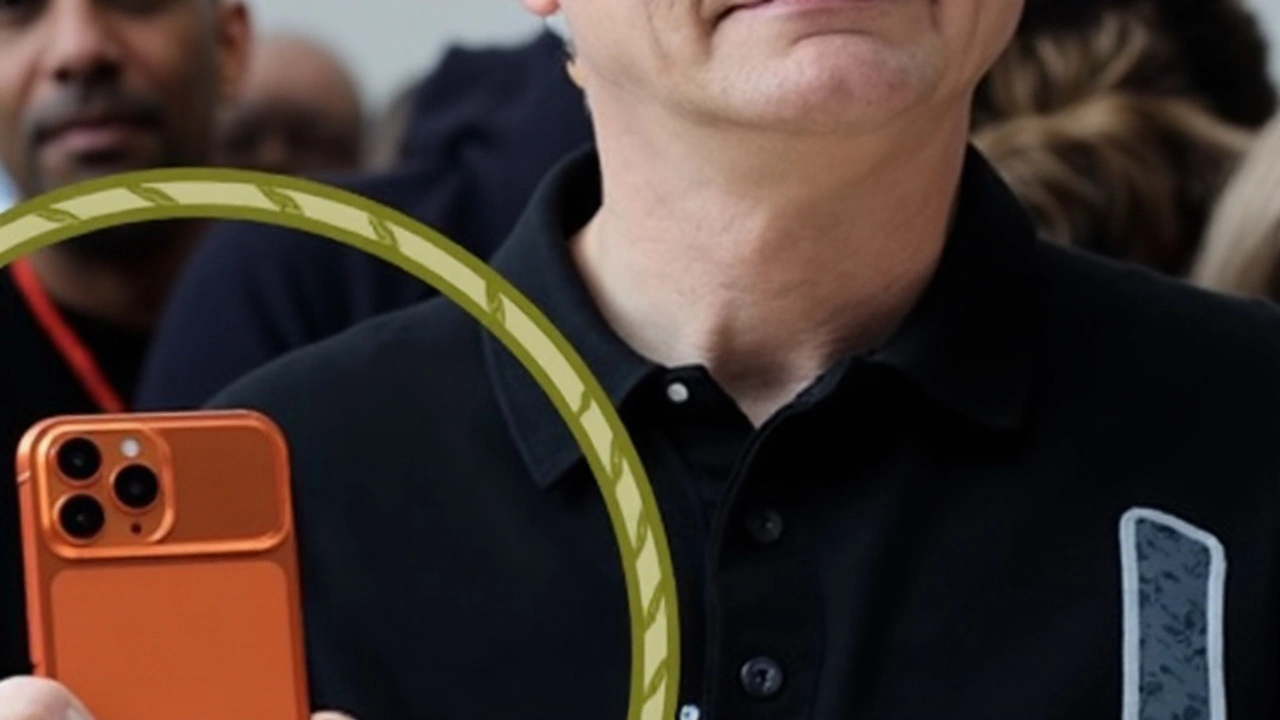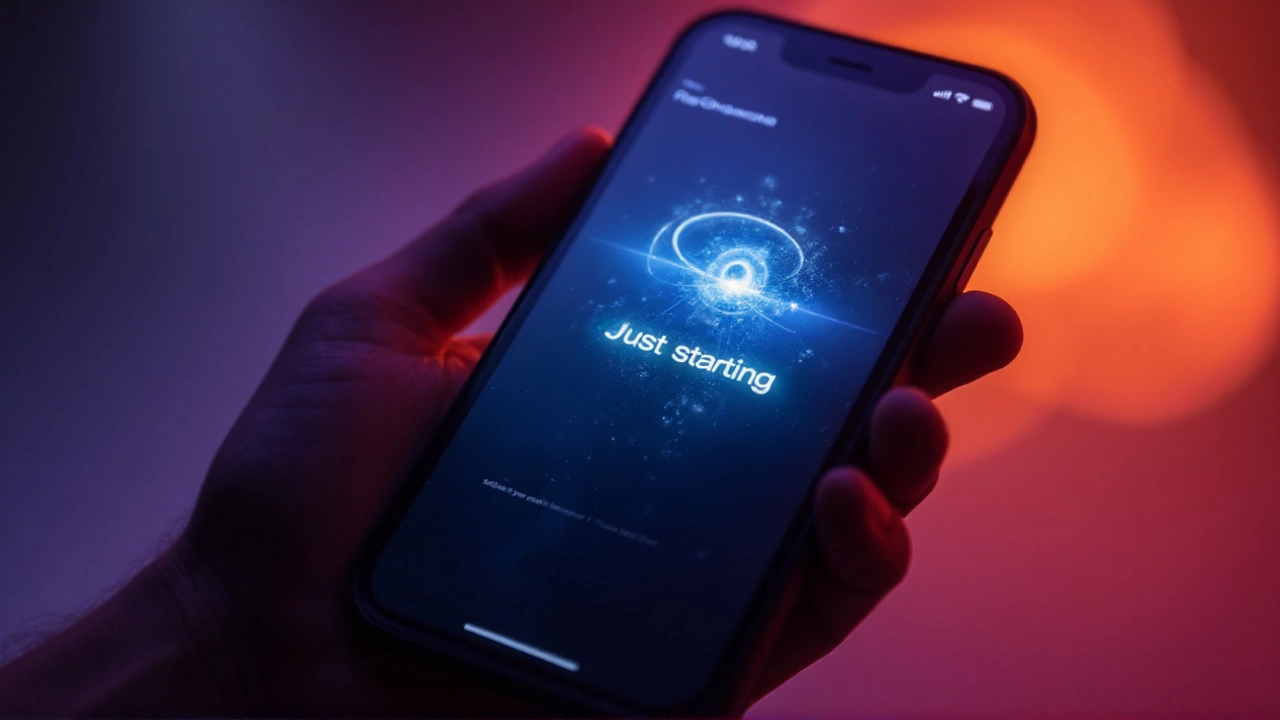Apple’s fall showpiece in Cupertino wasn’t subtle. The company rolled out three new smartphones—iPhone 17, iPhone 17 Pro, and iPhone 17 Pro Max—and pushed hard on cameras, performance, and battery life. The headline items: an 8x optical-quality zoom on the Pro phones, the A19 Pro chip, bigger and brighter displays with ProMotion, and a tougher Ceramic Shield 2 front that’s now three times more scratch-resistant than before. Pre-orders start September 12, and the phones hit stores on September 19.
The focus this year is clear. Apple is pitching the Pro models to creators and power users, while making the standard iPhone 17 a stronger all-rounder with a 48MP Main camera, a larger 6.3-inch display, and faster charging. The company is also nudging people toward more storage: the base iPhone 17 now starts at 256GB, double last year’s entry point, with the Pro line scaling up to a 2TB option on the Pro Max.
What’s new across the lineup
All three models share a familiar design language but bring material and durability upgrades. Ceramic Shield 2 covers the front on every model, and for the first time, Apple extends this protection to the back of the Pro variants. The goal: fewer micro-scratches and less glare in everyday use. Displays across the board get bright—peaking at up to 3000 nits outdoors—while keeping Always-On, HDR, and ProMotion where supported.
The camera systems get the biggest step-up. On the Pro and Pro Max, Apple is using three 48MP Fusion cameras (Main, Ultra Wide, and a new Telephoto). The company says the combination delivers the equivalent of eight focal lengths, with the longest optical-quality zoom ever on an iPhone at 8x. The standard iPhone 17 sticks to two rear cameras but both are high-resolution 48MP sensors: a Main with 2x optical-quality Telephoto and a new Ultra Wide that doubles as a macro shooter.
Apple is also refreshing the front camera. An 18MP Center Stage sensor arrives across the lineup. It’s not just about selfies—Center Stage framing helps in video calls and live streaming, something that matters for students, remote workers, and creators shooting on the go.
On displays, sizes and pixels get a slight bump. The iPhone 17 has a 6.3-inch Super Retina XDR panel at 2622-by-1206 pixels (460 ppi). The Pro Max stretches to 6.9 inches at 2868-by-1320 pixels (also 460 ppi). You still get Dynamic Island and the adaptive refresh up to 120Hz on models with ProMotion, which makes scrolling smoother and helps battery life by ramping down when the screen is idle.
Battery is a major story this cycle. Apple claims the iPhone 17 Pro Max holds the largest battery it has ever put into a phone, adding up to four hours of video playback versus the previous generation. The standard iPhone 17 is also rated for up to eight more hours of video playback than iPhone 16. Fast wired charging gets quicker on the iPhone 17 too: Apple says you can hit 50% in about 20 minutes, which is useful if you’re topping up before a commute.
Storage tiers get a reset. iPhone 17 moves to 256GB and 512GB. The Pro models offer 256GB, 512GB, and 1TB, with Pro Max adding a 2TB option aimed at filmmakers and photographers who shoot in high-bitrate formats. Colors are refreshed as well: iPhone 17 comes in Black, Lavender, Mist Blue, Sage, and White; the Pro pair arrive in Silver, Cosmic Orange, and Deep Blue.
On price, Apple holds the line for the base model. The iPhone 17 starts at $799—the same as last year’s launch price for iPhone 16—and the company is offering up to $700 in trade-in credit for iPhone 13 and newer, regardless of condition. That trade-in language will turn heads, because it softens the cost of a bigger storage base and nudges older users to upgrade.
- Lineup at a glance: iPhone 17 (6.3-inch), iPhone 17 Pro, iPhone 17 Pro Max (6.9-inch)
- Displays: Super Retina XDR, Always-On, HDR, up to 3000 nits peak brightness outdoors; ProMotion on supported models
- Cameras: 48MP Fusion systems across the board; Pro models add 48MP Telephoto and 8x optical-quality zoom
- Front camera: 18MP Center Stage on all models
- Durability: Ceramic Shield 2 on the front (and on the back for Pro models), with three times better scratch resistance
- Storage: 256GB base on all; Pro Max up to 2TB
- Battery and charging: larger batteries; faster wired charging on iPhone 17 (50% in about 20 minutes)
- Dates: Pre-orders September 12; in stores September 19

Pro models for creators and power users
Apple is giving the Pro and Pro Max a new thermal playbook. The A19 Pro chip sits inside a laser-welded, thermally conductive aluminum unibody with an Apple-designed vapor chamber. The promise is sustained performance under load—think long 4K shoots, heavy gaming, and overnight renders—without the heat spikes that throttle speeds on older designs. Thermals aren’t glamorous, but they’re often the difference between a quick burst and a reliable all-day machine.
That thermal headroom matters because the camera stack and pro video modes are more demanding. Pro models add ProRes RAW and Apple Log 2 for greater dynamic range and flexibility in grading. Genlock support is an industry-first for iPhone, letting multi-camera productions keep precise timing across rigs. Creators can record spatial video at 1080p/30 fps, and ProRes recording scales up to 4K/120 fps with support for external recording. For small studios, travel documentaries, or on-location shoots, that means one pocket device can capture reference footage, A-cam angles in a pinch, or B-roll without rethinking the whole pipeline.
The triple 48MP array broadens framing options. The new Telephoto lens pushes optical-quality zoom to 8x, which translates to tighter shots at sports events, wildlife tracking, or quick street portraits without stepping forward. The 48MP Ultra Wide covers expansive scenes and handles macro shots when you move in close. In low light, Apple’s Fusion approach blends data from multiple frames and sensors to keep detail while taming noise—a benefit you’ll notice most in indoor scenes, night cityscapes, and concerts.
On the other side of the phone, the 18MP Center Stage camera pulls double duty. For social video, it sharpens facial detail. For video calls, its automatic framing keeps you centered if you shift around. It’s a small touch but feels like a quality-of-life upgrade for people who spend hours in meetings or live-stream often.
Performance talk usually centers on benchmarks, but the day-to-day payoff is simpler: apps open faster, games hold higher frame rates longer, and photo edits render without the pause-wheel. With the A19 Pro and the new vapor chamber design, Apple is trying to make those benefits last under real workloads, not just in short tests. That’s especially important for 4K/120 fps ProRes recording and long capture sessions, which can tax both CPU and GPU.
The display experience supports that push. ProMotion scales refresh rates up to 120Hz when you need smoothness and down when you don’t, saving power. At up to 3000 nits outdoors, screen visibility in direct sun should improve—handy for framing shots on a bright beach or reading maps at noon.
Battery strategy seems designed around heavier use. The Pro Max’s largest-ever iPhone battery, combined with the more efficient silicon, is meant to get through a full workday plus travel and still have runway for night shooting. If you’re coming from an older model that struggled by late afternoon, this year’s Pro Max is squarely aimed at you. The standard iPhone 17’s eight-hour video playback bump over iPhone 16 also suggests broader power savings, not just a bigger cell.
Storage changes might be the most practical shift. A 256GB floor eliminates the constant shuffle of deleting videos or offloading photos for many users. At the top end, 2TB on the Pro Max is a clear nod to pro workflows—particularly if you’re leaning on ProRes RAW or Apple Log 2 at high frame rates. That extra headroom lets you shoot longer without babysitting files on set.
Design finishes are restrained. The iPhone 17’s palette leans soft—Black, Lavender, Mist Blue, Sage, and White—while the Pro line swings more premium with Silver, Cosmic Orange, and Deep Blue. The aluminum unibody with laser-welded vapor chamber on Pro models keeps it light but rigid, and the extended Ceramic Shield to the back should reduce those hairline scuffs that appear over months of pocket time.
For anyone deciding between models, here’s the quick logic. Choose iPhone 17 if you want a bigger, brighter screen than last year, a 48MP Main and Ultra Wide with solid 2x optical-quality zoom, and faster top-ups at a lower entry price. Go Pro if you want the 8x optical-quality zoom, the triple 48MP system, and the A19 Pro headroom with the new thermal design. Pick Pro Max if you live on your phone for work, shoot a lot of video, or just want the best battery life Apple offers.
Pricing and trade-ins round out the picture. The $799 starting price for iPhone 17 mirrors last year, but the jump to a 256GB base makes that tag look better. The trade-in offer of up to $700 for an iPhone 13 or newer—regardless of condition—signals Apple is keen to pull a large pool of owners over the next upgrade cycle. For many, that will be the difference between sticking with an aging device and stepping into the new camera and battery gains.
Release timing is classic Apple. Pre-orders open Friday, September 12, with wide availability a week later on Friday, September 19. Expect the Pro Max to be the hardest to find early on, given the bigger battery, new 8x zoom, and the 2TB option appealing to creators. If you’re aiming for a specific color or storage tier, ordering early is the safe move.
Bottom line for this year’s lineup: Apple is leaning into the things people notice every day—sharper photos, stronger zoom, brighter screens, and longer battery life—while giving professionals the recording tools they need without a backpack of gear. The entry model gets more capable, the Pro models go deeper for creators, and the price strategy keeps the door open for upgrades.

Write a comment